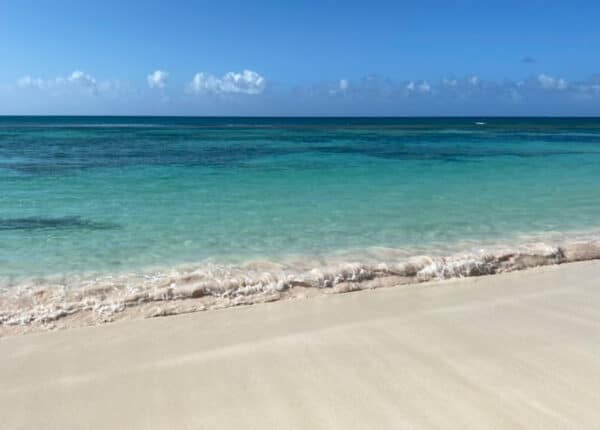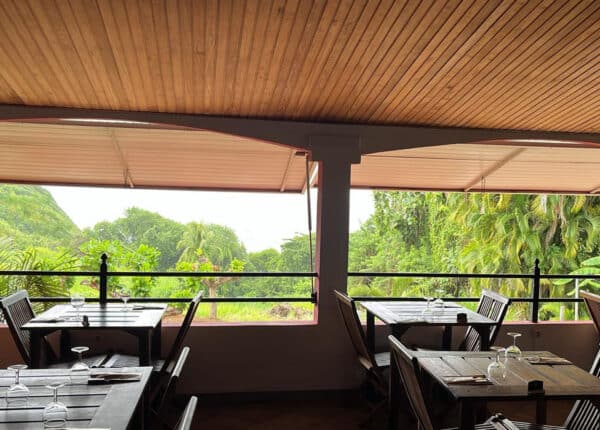Op-Ed: Caribbean Climate Change: What’s Next?
By George Nicholson and Nnyeka Prescod
Op-Ed Contributors
There is rising anxiety amongst island nations as the effects of the continuous warming of the earth become more evident on our physical environment.
The negative impacts arising from changes in weather patterns due to global warming include rising temperatures, prolonged periods of drought, sea level rise (SLR) as well as an increase in frequency and intensity of storms, consequently affecting services, infrastructure and principle revenue generating sectors; which are largely service-oriented and resource-based. Islands with manufacturing economies are not immune to these impacts as flooding, which occurs frequently, also causes significant losses.
In the long term, this situation may be exacerbated by the current direction of fossil fuel consumption and increasing urbanization with population expansion. With the quadrupling of the number of extreme weather events over the past 30 years, island nations are faced with the challenge of promoting long term development whilst providing sufficient financial flows to reduce economic fragilities and support resilience building. In response to these costly heterogeneous scenarios, the development of new and innovative financing instruments surrounding ‘ex-ante’ mobilisation becomes increasingly relevant.
The Intergovernmental Panel on Climate Change (IPCC), in its Fourth Assessment Report on global climate change, established that climates were indeed changing, owing to the growing concentrations of greenhouse gas (GHG) emissions in the atmosphere.
Global sea levels have risen between 6 to 8 inches in the past 100 years and the world’s land ice is slowly disappearing. Predictions arising from the Regional Climate Modelling (RCM) system indicate that by the year 2090, the subregional mean annual temperature is expected to increase between 2.40 and 3.55 degrees Celsius. Moreover, by the year 2100, the IPCC estimates that sea levels may rise by as much as 20 inches.
The threat of 20 inches sea level rise, increasing temperatures and the increased frequency and intensity of storms by 2100 will spell disaster for many of the region’s coastal economies. Tourism, the region’s largest earner representing approximately 15% of regional GDP and 13% of jobs, is likely to be heavily impacted. Even more significantly, there also exists the potential for severe disruption of operations; which signifies hidden costs such as productivity losses and relocation costs.
Typically, in the implementation of risk reduction actions, the Caribbean has largely relied on grant funds from developed countries and concessional loans from international financial institutions as its main source of significant funding; as it is often posited that for the region to undertake any transformational activity, there must be some contribution from the international community.
However, Caribbean Small Island Developing States (SIDS) have progressively experienced less success in accessing Official Development Aid (ODA), as cash flows from traditional bilateral donors continue to decrease. Compounding this reality of reduced inflows is the fact that despite troubling fiscal metrics, few Caribbean islands satisfy the per capita income criteria for treatment as countries eligible for development assistance, resulting in increasing exclusion from a range of funding schemes.
In the face of these trends, and given the fact that Caribbean SIDS presently allocate less than 4% of fiscal expenditures to capital investment, the region must, in an effort to maintain and accelerate environmental sustainability, economy stability and social infrastructure, develop innovative means to mobilise internal investment.
The Hyogo Framework for Action and the Sendai Framework for Disaster Risk Reduction both mention that although disaster-prone SIDS warrant special attention, each state has the primary responsibility for its own sustainable development and for taking effective measures to reduce disaster risk.
As international frameworks move towards advocating accountability, and donors move towards the provision of technical assistance in lieu of direct financial support, the opportunity to leverage the region’s internal assets so that the Caribbean can manage its own inherent vulnerabilities marks a departure from the typical approach to funding.
The success of the Guyana-Norway Partnership as a scalable, replicable model for the Reducing Emissions from Deforestation and Forest Degradation (REDD+) Programme demonstrates that with the right financial incentives, large areas of forest can be effectively maintained, without restricting social and economic development. Other options for consideration include monetising the region’s natural and artificial sinks, such as forests and even decommissioned oil reservoirs, in order to dually reduce emissions and attract finance.
Despite the relative success of the Guyana-Norway scheme, there has been very little development of carbon trading within the region. One argument is that there is insufficient scale to attract the level of financing that would enable countries to address climate or development objectives.
The other explanation posited is that the region does not have the human capacity to develop schemes at this level given their inherent complexity and difficulty to monitor and maintain. Opportunities may exist however, for the region to look towards the formulation of joint strategies for emissions abatement and resilience building in the form of a regional Emissions Trading Scheme (ETS). These types of schemes are becoming increasingly popular with 17 different domestic emissions trading programmes in existence across the 35 countries which currently accounts for 40% of global GDP.
The development of domestic or regional carbon trading schemes through the cap-and-trade principle can assist islands that are driven by intensive extractive or manufacturing sectors, and those whose economies are based on exploiting the natural environment. Implementing such a program could allow for the conversion of GHG emissions into revenue which could be then used for resilience-building activities.
In doing so, countries can begin the process of leveraging their natural sinks, as a mitigation measure, and in doing so generate revenue from auctions and sales to be used for financing adaptation and DRR initiatives. However, before the region can accomplish this goal, the process of identifying the appropriate schemes, legal and regulatory requirements, as well as the barriers that may impede participation, must be done.
In the face of this new era of climate variability, shifting to a low carbon development trajectory by establishing incentives to remove pressure on forests, expanding clean energy industries, and non-extractive sectors is an appealing expensive venture. Given the few notable exceptions to date, the Caribbean must now examine the barriers that have prevented the development of these types of mechanisms across the region.
Leveraging the region’s natural assets to generate revenue while forging ahead to develop sustainably, is currently a widely unexplored option within the Caribbean but as the tides turn, it is now the opportune time for Caribbean SIDS to explore innovative approaches for financing regional change.
George Nicholson is the Director of Transport and Disaster Risk Reduction and Nnyeka Prescod is the Adviser of Transport and Disaster Risk Reduction of the Association of Caribbean States.
Note: the opinions expressed in Caribbean Journal Op-Eds are those of the author and do not necessarily reflect the views of the Caribbean Journal.







